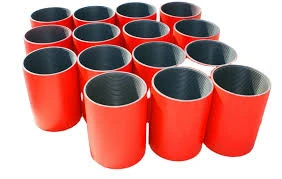- Afrikaans
- Albanian
- Amharic
- Arabic
- Armenian
- Azerbaijani
- Basque
- Belarusian
- Bengali
- Bosnian
- Bulgarian
- Catalan
- Cebuano
- Corsican
- Croatian
- Czech
- Danish
- Dutch
- English
- Esperanto
- Estonian
- Finnish
- French
- Frisian
- Galician
- Georgian
- German
- Greek
- Gujarati
- Haitian Creole
- hausa
- hawaiian
- Hebrew
- Hindi
- Miao
- Hungarian
- Icelandic
- igbo
- Indonesian
- irish
- Italian
- Japanese
- Javanese
- Kannada
- kazakh
- Khmer
- Rwandese
- Korean
- Kurdish
- Kyrgyz
- Lao
- Latin
- Latvian
- Lithuanian
- Luxembourgish
- Macedonian
- Malgashi
- Malay
- Malayalam
- Maltese
- Maori
- Marathi
- Mongolian
- Myanmar
- Nepali
- Norwegian
- Norwegian
- Occitan
- Pashto
- Persian
- Polish
- Portuguese
- Punjabi
- Romanian
- Russian
- Samoan
- Scottish Gaelic
- Serbian
- Sesotho
- Shona
- Sindhi
- Sinhala
- Slovak
- Slovenian
- Somali
- Spanish
- Sundanese
- Swahili
- Swedish
- Tagalog
- Tajik
- Tamil
- Tatar
- Telugu
- Thai
- Turkish
- Turkmen
- Ukrainian
- Urdu
- Uighur
- Uzbek
- Vietnamese
- Welsh
- Bantu
- Yiddish
- Yoruba
- Zulu
seating nipple in tubing
Understanding Seating Nipple in Tubing A Key Component in Oil and Gas Operations
In the oil and gas industry, efficient and reliable tools are essential for successful operations, especially when it comes to the extraction process. One such critical component is the seating nipple, commonly referred to as a seating nipple in tubing. This device plays a vital role in ensuring well integrity and optimizing production procedures. In this article, we will explore what a seating nipple is, its function in tubing systems, and the advantages it offers in the context of oil and gas operations.
A seating nipple is a specialized joint installed within a tubing string in a wellbore. Its primary function is to provide a secure and reliable anchor point for various downhole tools and equipment, such as packers and plugs. By design, seating nipples allow these tools to be positioned at specific depths, ensuring efficient isolation of sections of the wellbore and facilitating effective fluid flow management.
The design of a seating nipple typically includes a tapered or contoured shoulder that allows tools to seat securely when they are lowered into the tubing. Once the tool is in position, pressure can be applied to maintain the necessary seal. This seating capability is crucial, particularly when dealing with high-pressure environments or when other tools need to be deployed later in the operation.
One of the significant advantages of using seating nipples in tubing systems is their ability to streamline well intervention operations. When operators need to perform maintenance or remedial work, having a reliable and easily accessible termination point saves time and resources. Workers can quickly deploy tools without needing to pull the entire tubing string, which would increase operational costs and risk.
seating nipple in tubing

In addition to efficiency, seating nipples enhance well integrity. By providing a robust anchor point for packers, they help in isolating production zones and preventing cross-flow between different formations. This isolation is vital in maintaining reservoir pressure and ensuring the optimal extraction of hydrocarbons.
Moreover, seating nipples are designed to withstand extreme conditions typically encountered in downhole environments. Their materials and engineering allow them to bear heavy loads and resist corrosion and abrasion from the produced fluids. This durability is crucial in prolonging the lifespan of both the seating nipple and the associated tools, ultimately leading to lower maintenance and replacement costs.
Another key aspect of seating nipples is their adaptability. Various types of seating nipples can be customized to meet the specific requirements of different well designs and production strategies. Whether in open-hole or cased-hole settings, operators can select appropriate nipples that fit their operational needs.
In conclusion, the seating nipple in tubing is an indispensable component of modern oil and gas operations. Its primary functions of providing secure anchor points for downhole tools, enhancing well integrity, and streamlining intervention processes make it essential for effective resource extraction. With advancements in materials and design, seating nipples continue to evolve, allowing operators to adapt to the increasingly complex challenges of the industry. As technology progresses, the importance of these components will surely remain a vital focal point in ensuring the efficiency and safety of oil and gas explorations.
-
Tubing Pup Joints: Essential Components for Oil and Gas OperationsNewsJul.10,2025
-
Pup Joints: Essential Components for Reliable Drilling OperationsNewsJul.10,2025
-
Pipe Couplings: Connecting Your World EfficientlyNewsJul.10,2025
-
Mastering Oilfield Operations with Quality Tubing and CasingNewsJul.10,2025
-
High-Quality Casing Couplings for Every NeedNewsJul.10,2025
-
Boost Your Drilling Efficiency with Premium Crossover Tools & Seating NipplesNewsJul.10,2025







